American International Pictures LLC is an American film production company owned by Amazon MGM Studios. In its original operating period, AIP was an independent film production and distribution company known for producing and releasing films from 1955 until 1980, a year after its acquisition by Filmways in 1979.

Black Sabbath is a 1963 horror anthology film directed by Mario Bava. The film consists of three separate tales that are introduced by Boris Karloff. The order in which the stories are presented varies among the different versions in which the film has been released. In the original, Italian print, the first story, titled "The Telephone", involves Rosy who continually receives threatening telephone calls from an unseen stalker. The second is "The Wurdulak", where a man named Gorca (Karloff) returns to his family after claiming to have slain a Wurdulak, an undead creature who attacks those that it had once loved. The third story, "The Drop of Water", is centered on Helen Corey, a nurse who steals a ring from a corpse that is being prepared for burial and finds herself haunted by the ring's original owner after arriving home.

Laura Antonelli was an Italian film actress who appeared in 45 films between 1964 and 1991.

The beach party film is an American film genre of feature films which were produced and released between 1963 and 1968, created by American International Pictures (AIP), beginning with their surprise hit, Beach Party, in July 1963. With this film, AIP is credited with creating the genre. In addition to the AIP films, several contributions to the genre were produced and released by major and independent studios alike. According to various sources, the genre comprises over 30 films, with the lower-budget AIP films being the most profitable.

The Girl Who Knew Too Much is a 1963 Italian giallo film directed by Mario Bava, starring John Saxon as Dr. Marcello Bassi and Letícia Román as Nora Davis. The plot revolves around a young American woman named Nora, who travels to Rome and witnesses a murder. The police and Dr. Bassi do not believe her, since a corpse has not been found. Several more killings follow, tied to a decade-long string of murder victims chosen in alphabetical order.

Black Sunday is a 1960 Italian gothic horror film directed by Mario Bava in his official directorial debut, and starring Barbara Steele, John Richardson, Andrea Checchi, Ivo Garrani, Arturo Dominici and Enrico Oliveri. Loosely based on Nikolai Gogol's short story "Viy", the film takes place in Moldavia and tells the story of a witch who is put to death by her brother, only to return two centuries later to seek revenge upon his descendants.
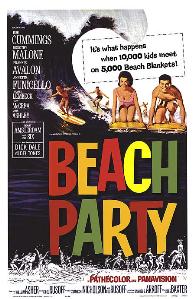
Beach Party is a 1963 American film and the first of seven beach party films from American International Pictures (AIP) aimed at a teen audience. This film is often credited with creating the beach party film genre.

Francesco "Ciccio" Ingrassia was an Italian actor, comedian and film director.

Planet of the Vampires is a 1965 science fiction horror film produced by Fulvio Lucisano, directed by Mario Bava, that stars Barry Sullivan and Norma Bengell. The screenplay, by Bava, Alberto Bevilacqua, Callisto Cosulich, Antonio Roman and Rafael J. Salvia, was based on an Italian-language science fiction short story, Renato Pestriniero's "One Night of 21 Hours". American International Pictures released the film as the supporting film on a double feature with Daniel Haller's Die, Monster, Die! (1965).
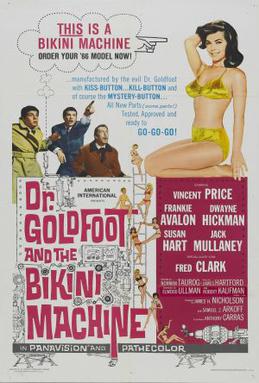
Dr. Goldfoot and the Bikini Machine is a 1965 Pathécolor comedy film directed by Norman Taurog and distributed by American International Pictures. Starring Vincent Price, Frankie Avalon, Dwayne Hickman, Susan Hart and Jack Mullaney, and featuring Fred Clark, the film is a parody of the then-popular spy trend, made using actors from AIP's beach party and Edgar Allan Poe films. The film was retitled Dr G. and the Bikini Machine in England due to a threatened lawsuit from Eon, holder of the rights to the James Bond series.

Ghost in the Invisible Bikini is a 1966 American fantasy comedy film. It is the seventh and last of American International Pictures' beach party films. The film features the cast cavorting in and around a haunted house and the adjacent swimming pool.
Louis M. "Deke" Heyward was an American producer and film and television screenwriter.
Antonio Rinaldi was an Italian cinematographer and camera operator. He worked exclusively for director Mario Bava on several films, including Planet of the Vampires (1965), Dr. Goldfoot and the Girl Bombs (1966), and Danger: Diabolik (1968).

Luciano Catenacci was an Italian actor and production manager who worked on mainly Italian produced films during the 1960s, 1970s and 1980s.
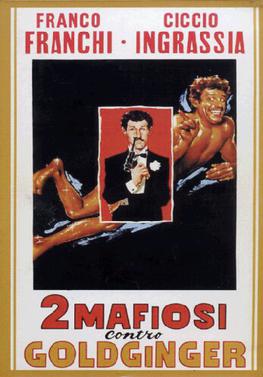
Two Mafiosi Against Goldginger or Due mafiosi contro Goldginger is a 1965 Eurospy comedy film directed by Giorgio Simonelli starring the comic duo Franco and Ciccio. It is a spoof of the 1964 James Bond film, Goldfinger. It was picked up by American International Pictures and dubbed into English to be shown on their AIP-TV movie package as The Amazing Dr. G or Two Crazy Secret Agents.
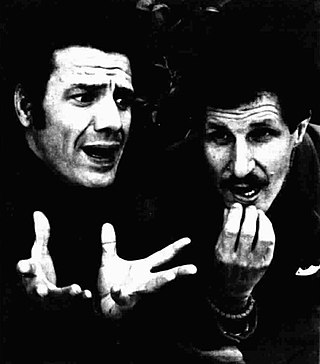
Franco and Ciccio were a comic comedy duo formed by Italian actors Franco Franchi (1928–1992) and Ciccio Ingrassia (1922–2003), particularly popular in the 1960s and 1970s. Their collaboration began in 1954 in the theatre field, and ended with Franchi's death in 1992. The two made their cinema debuts in 1960 with the film Appuntamento a Ischia. They remained active until 1984 when their last film together, Kaos, was shot, although there were some interruptions in 1973 and from 1975 to 1980.
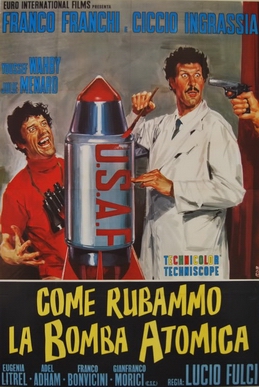
Come rubammo la bomba atomica or How We Stole the Atomic Bomb is a 1967 Italian-Egyptian international co-production Eurospy comedy based on the 1966 Palomares B-52 crash. Filmed in Italy and Egypt, it stars the Italian comic duo of Franco and Ciccio and was directed by Lucio Fulci. The film features a teaming of parodies of famous film secret agents.
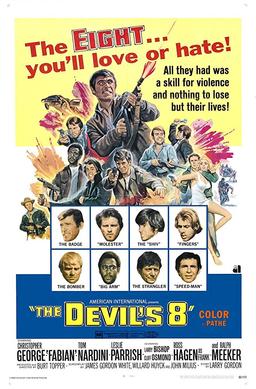
The Devil's 8 is a 1969 film directed by Burt Topper and starring Christopher George, Fabian, Tom Nardini and Leslie Parrish. It was produced and distributed by American International Pictures.

Fulvio Lucisano is an Italian film producer. In 2005 he was honored with a retrospective at the 62nd Venice International Film Festival.

Savage Gringo is a 1966 Western film starring Ken Clark. The film is about a drifter who protects a rancher couple from a ruthless landowner. Under its Italian title, Savage Gringo was one of numerous Spaghetti Westerns retitled to take advantage of the success of Duccio Tessari's successful Ringo duology.

















